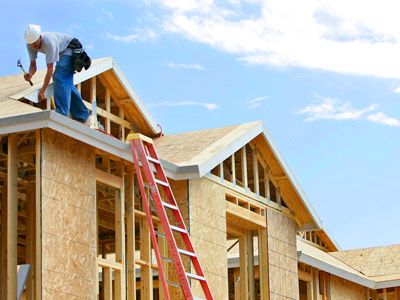Proficient Carmel In Contractor for Exterior And Interior Remodeling Needs
Proficient Carmel In Contractor for Exterior And Interior Remodeling Needs
Blog Article
How a General Service Provider Can Transform Your Typical Areas Into Practical Spaces
The change of common locations into practical areas is a nuanced procedure that calls for a basic professional's competence in examining details area needs and making tailored options. By taking into consideration variables such as design, access, and aesthetic allure, a service provider can develop settings that not just offer functional objectives yet also foster community engagement. Through efficient task administration and adherence to quality criteria, these remodellings can considerably boost individual experience. Yet, the details entailed in balancing design and functionality elevate crucial concerns regarding ideal methods and prospective challenges that benefit additional expedition.
Assessing Current Common Location Demands
When examining usual areas, it is necessary to recognize and understand the certain requirements of the community they serve. This procedure begins with a detailed analysis of existing use patterns, which involves event data walking website traffic, optimal use times, and activities taking place within these spaces. Involving with neighborhood participants through conferences or studies can provide beneficial insights into their preferences and obstacles.
Following, it is necessary to think about the demographic make-up of the neighborhood, consisting of age, way of living, and any special requirements that might impact how these rooms are utilized. Family members with young youngsters might need play areas, while older adults may prioritize access functions.
Furthermore, assessing the existing framework and services is vital. Identifying locations that are underutilized or in requirement of repair can educate possible renovations. Teaming up with stakeholders, such as building managers and regional companies, makes sure that the evaluation shows a comprehensive understanding of the community's demands.
Inevitably, a careful assessment of current usual area requires lays the groundwork for reliable improvements, allowing for the creation of rooms that promote engagement and boost the general lifestyle within the community.
Creating for Performance and Aesthetics
A thorough understanding of area requires establishes the phase for effective style that balances capability and appearances alike areas. Effective style requires a thoughtful approach that considers both the practical uses the space and the visual allure that enhances the atmosphere.
Useful design involves producing rooms that deal with the certain tasks and interactions of the neighborhood. This could include flexible seating plans for gatherings, easily accessible paths for individuals with flexibility difficulties, or marked areas for entertainment activities. Each component needs to serve a purpose while making certain convenience of motion and comfort for customers.
The selection of colors, materials, and lights can dramatically impact the perception of an area. In addition, aligning the style with the community's social identification can foster a sense of belonging and pride.
Budgeting and Resource Allowance
Reliable budgeting and resource allocation are crucial elements in the successful transformation of common locations. A distinct budget plan describes the financial criteria within which the job should operate, guaranteeing that costs are regulated and sources are efficiently utilized. This begins with a complete evaluation of project needs, including design components, materials, and labor.

A basic contractor plays an essential role in this stage, teaming up with stakeholders to develop sensible budget plan quotes that line up with the designated vision. By prioritizing important features and exploring cost-effective choices, the service provider can maximize costs without compromising quality.
Resource allowance entails purposefully designating employees, tools, and materials to various phases of the project (Kitchen Remodeling Indiana). This needs mindful planning to ensure and prevent hold-ups that each component is supplied on schedule. In addition, regular surveillance of expenditures against the spending plan helps to determine potential overruns early, enabling for prompt adjustments
Taking Care Of Construction Refine Efficiently
Managing the building and construction process effectively is vital for achieving timely task completion and keeping budget stability. A well-coordinated technique entails careful planning, clear communication, and effective resource management. General professionals need to develop an in-depth task timeline that details each stage of building and construction, permitting for the recognition of important landmarks and potential bottlenecks.
Regular progress meetings are essential for keeping all stakeholders informed and aligned. These meetings assist in the timely resolution of problems, making certain that the project remains on track. Additionally, using project administration software program can simplify interaction, track development, and handle documentation, reducing the possibility of misconceptions and delays.
Effective source appropriation is additionally vital. By making certain that products, labor, and equipment are readily available when needed, basic service providers can protect against expensive disturbances. Executing a proactive strategy to run the risk of management more improves efficiency, as it enables the identification go to this web-site and mitigation of possible challenges prior to they rise.

Guaranteeing Conformity and Quality Standards
Compliance and quality requirements are basic to the success of any type of building and construction project, ensuring that the completed areas not only satisfy customer expectations however additionally follow regulative needs. A general contractor plays a pivotal function in enforcing these requirements throughout the building and construction process.
First, it is essential for the contractor to stay upgraded on neighborhood building regulations, security regulations, and sector best practices. This understanding allows them to lead design selections and material choices that align with conformity requirements. Normal assessments and high quality assessments throughout the building and construction phase assistance to identify possible concerns early, alleviating expensive delays and revamp.
Furthermore, a respectable basic service provider fosters a culture of quality amongst subcontractors and employees. This can be attained by giving training on compliance procedures and applying rigorous quality assurance steps. By developing clear interaction channels, the specialist can make sure that everyone included understands their duties regarding conformity and top quality.
Conclusion
To conclude, the role of a basic specialist in transforming usual areas into practical areas is pivotal. Via a thorough evaluation of neighborhood demands, thoughtful layout, careful budgeting, and efficient project administration, these experts can develop atmospheres that boost use and visual appeal. Adherence to conformity and quality standards better makes certain that renewed spaces not just fulfill the assumptions of stakeholders yet additionally foster engagement and improve the general experience for all individuals within the community.
The improvement of usual areas check here into useful spaces is a nuanced procedure that requires a basic professional's competence in assessing particular neighborhood demands and designing customized options. By considering factors such as format, accessibility, and visual allure, a specialist can create environments that not only offer functional objectives yet likewise foster neighborhood engagement. General contractors have to establish an in-depth task timeline that outlines each stage of building, enabling for the recognition of potential bottlenecks and essential landmarks.

Report this page